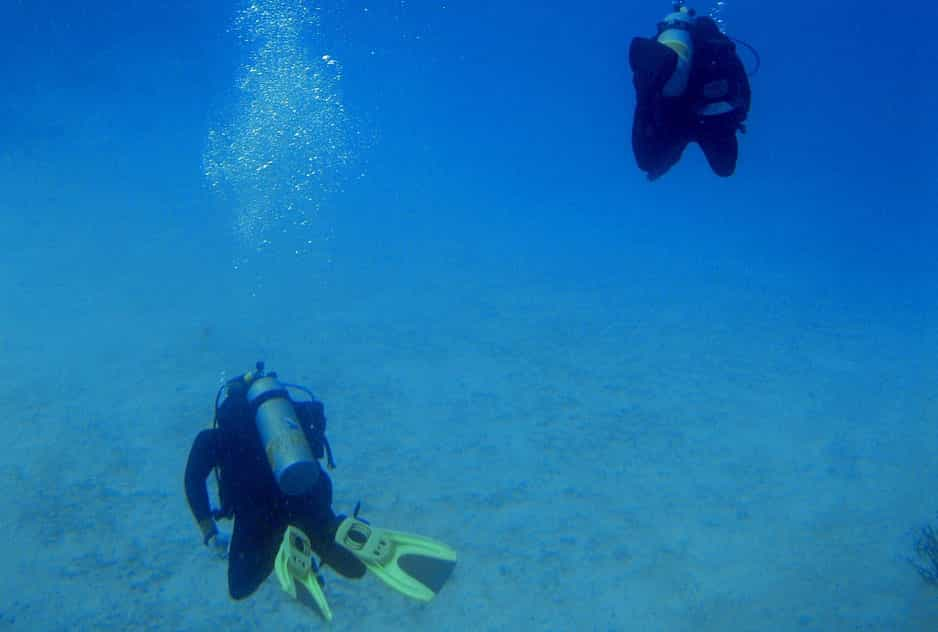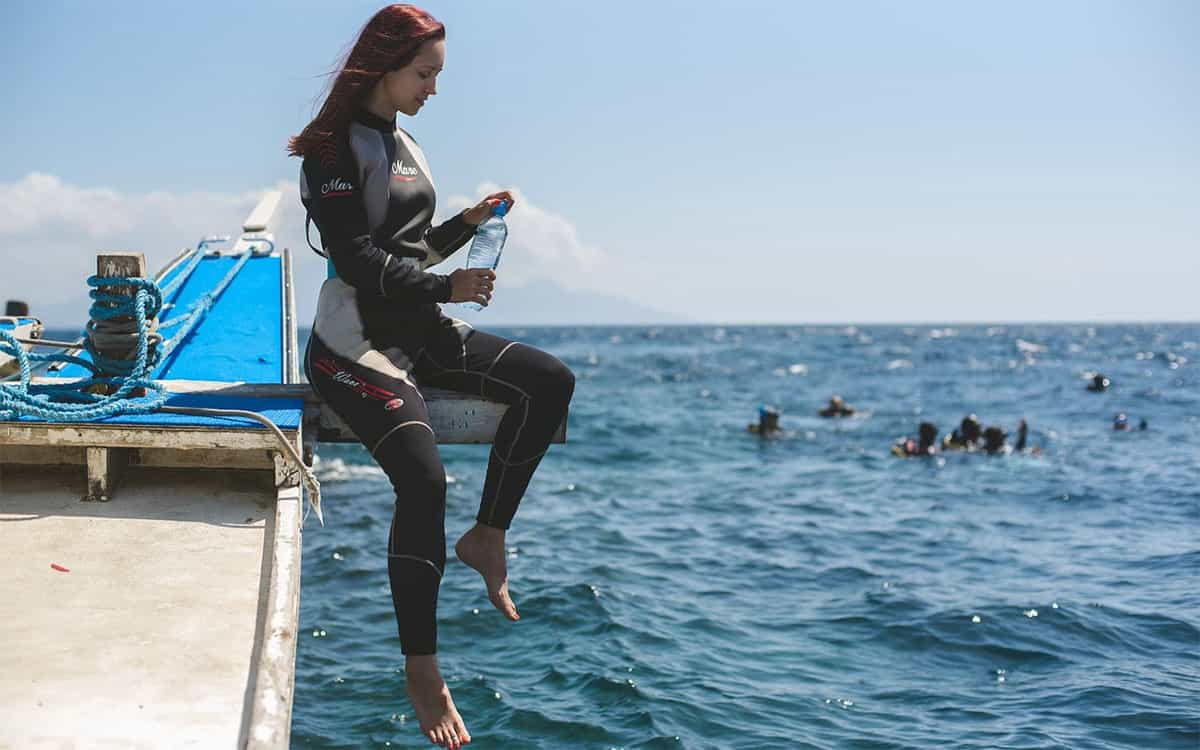
Although the Mediterranean waters around the Costa del Sol aren’t particularly rocky or deep, conditions are good for diving, especially if you’re A beginner as the relatively calm seas and gentle tides make diving in Malaga easier. There are a surprising number of marine species around the Costa del Sol, but more adventurous divers may wish to explore the waters east of Nerja or nearer the Strait where there are several wrecks.
Discover a world of adventure and excitement along the stunning coastline of Malaga province. With over 160 kilometers of beautiful beaches and crystal-clear waters, there is no shortage of activities and experiences to enjoy. From exploring the natural beauty of the sea to discovering the rich history and culture of the region, there is something for everyone. Embrace sustainability, engage in thrilling water sports, and immerse yourself in local traditions. Dive in Malaga and set sail on an unforgettable journey.
Biodiversity
The Costa del Sol lies between three marine ecoregions: the Lusitanian, the Mauritanian and the Mediterranean. This gives it abundant biodiversity.
You can observe more than 100 different species of marine or aquatic birds. More than 30 coastal plants. More than 15 different cetaceans. Four species of sea turtles. Three of seagrasses. More than 200 species of fish. More than 500 marine invertebrates including molluscs, crustaceans, echinoderms, cnidarians, polychaetes, bryozoans or sponges. There are also more than 150 species of algae.
If you are a tourist interested in diving in the Costa del Sol, you will enjoy a wide variety of marine life in a unique and diverse environment.
Where to dive
For more adventurous divers, you may want to explore the waters east of Nerja or near the Strait where there are several shipwrecks. There are also several diving schools and tours available along the Costa del Sol that can provide you with instruction and guidance on where to dive.
Shipwrecks in Malaga
Do you want to explore sunken ships while diving in Malaga? Experience history first-hand! The Costa del Sol attracts tourists for its dreamy landscapes, extraordinary beaches, and culturally valuable attractions. But its beauty extends beyond the surface.
Sometimes the most amazing things hide from our eyes. They can only be found in unique places accessible to the adventurous: the seabed.
The Alboran Sea has witnessed naval battles, pursuits, sabotage, and climatic disasters. From the Phoenicians to the Civil War. To date, 57 wrecks of ships, vessels, galleons, submarines have been recorded. We can even find entire ships!
Here are some of the treasures submerged in Malaga’s waters:
Mezquitilla Wreck
Located off the coast of Mezquitilla, a town belonging to the municipality of Velez Malaga, this Phoenician ship holds great archaeological value due to its age. It dates back to between the mid and second third of the 6th century BC. The wreck is considered a testament to coastal traffic at the time and lies near the coast, opposite the Morro de Mezquitilla and Chorreras sites. In the 1980s, archaeologists documented the remains of a Punic merchant ship’s cargo that transported a load of amphorae. During the operation, they recovered five incomplete pieces. The classification of the material suggests that the shipwreck likely occurred no later than the mid or second third of the 6th century BC.
Lys Galleon (Madelaine)
Belonging to the 18th century and of French origin, there has been much speculation about the cause of its sinking, which could have been by the French themselves to prevent the English from capturing it in their war for Gibraltar. It is now located in Estepona, a few kilometres from Gibraltar and near San Pedro de Alcantara in the Posidonia forests.
Isabella
English ship wrecked by a storm on the coast of Benalmadena on March 4th 1855, commanded by Captain Brown. The ship was carrying a load of marble from Genoa to Calcutta which is now on display at the Felipe Orlando Pre-Columbian Art Museum in Benalmádena. The main sculpture is that representing Dionysus, made of white marble and 1.5 metres high. It was found in July 1961 on Torrequebrada beach.
C-3 Submarine
Republican submarine sunk by Nazi troops in 1936 with 37 fatalities and only three survivors. A local lawyer, who was fishing 3.9 miles from El Candado port alerted authorities due to drops of diesel that had risen to the surface and that’s when they found it. Since then, this person has been fighting to refloat it but has not yet succeeded.
The Dolphin
Republican ship commonly known as ‘The Rice Ship’ for being responsible for bringing food to those isolated by Franco’s troops in Málaga. It was sunk in 1937 just before La Desbandá (La Desbandá, also known as the massacre of the Malaga-Almería road, was an attack on civilians from the sea by the rebel faction during the Spanish Civil War on February 8, 1937). It is located 40 km from Malaga in the municipality of Torrox and is easily accessible by paddle surf or kayak.
Diving Clubs and schools
If you want to learn to dive in Malaga, most diving clubs and schools along the coast offer courses that lead to the globally recognized PADI certification. PADI (Professional Association of Diving Instructors) is the world’s leading scuba diving training organization and offers a range of courses for divers of all levels.
For beginners, the PADI Open Water Diver course is the first step towards becoming a certified diver. This course teaches you the fundamentals of scuba diving, including dive theory, equipment use and underwater skills. Upon completion, you will be certified to dive to a maximum depth of 18 meters (60 feet) with a buddy.

For more experienced divers, there are a variety of advanced courses available, such as the PADI Advanced Open Water Diver course, which builds on the skills learned in the Open Water Diver course and introduces you to new diving activities such as deep diving and underwater navigation.
There are also specialty courses available that focus on specific areas of diving, such as wreck diving, night diving or underwater photography. These courses allow you to develop your skills and knowledge in areas that interest you.
To obtain PADI certification, you must complete the required coursework and training dives with a certified PADI instructor. Many diving schools along the Costa del Sol offer PADI courses and can help you obtain your certification.
Benalmadena Costa
Benalmadena is home to 17 beaches, many of them perfect for diving and snorkelling. Las Yucas Beach is a top spot for such activities, thanks to its wild cliffs as plentiful sea life .
- Scuba Tours: https://goo.gl/maps/PBXfJ6JFPHiRJSSG8
- Proffesional School: https://goo.gl/maps/k2yabW3WjRYMBFybA
- Into the Blue Diving: https://goo.gl/maps/Sa3spCDJNLZ7nfVC8
- Scubazul: https://goo.gl/maps/cVsjFm4fC9HDdMox7
Malaga
Malaga capital is even a good place to dive, as you’ll see in Peñón del Cuervo Beach. The name comes from the huge rock that emerges from the sea —right along its coast—under which many fish and sealife live. Because of that, this is a great place to dive or snorkel .
At Acantilados de El Cantal you can dive at a depth of 20 meters amid a proliferation of invertebrates and new marine flora and fauna.
- Natura Dive: https://goo.gl/maps/z4FdC2GLoeAmH4Nx5
- Molamola Dive: https://goo.gl/maps/vVjvBeeZQNeGGwUr6
Mijas
From Mijas Coast you can go on excursions of up to 10 hours to Marbella, Marina del Este, la Herradura or Gibraltar. You’ll dive in areas of red seaweed that offers shelter to a great biodiversity of fauna as well as unparalleled fields of gorgonia. You’ll also discover its archeological riches and peek into the nooks and crannies of its sunken fishing boats.
- Diving with Nic: https://goo.gl/maps/ZWcf4bFjRnLCKJmT6
- Blue Fin Divers: https://goo.gl/maps/d2YSf3ej4UG3MntC6
- Abysub School: https://goo.gl/maps/koJhbcmc7SHUazxJ8
Marbella
In Marbella, the famous, protected Artola-Cabopino Beach stands out for its beauty. Head to the area that divides Artola from Cabopino, and you’ll find a breakwater that’s great for diving .
- Simply Diving: https://goo.gl/maps/hK89hP6itpR5Mb5N6
- Scuba Tours: https://goo.gl/maps/RymVqMJ9egM3d1nq6
Estepona
Estepona is an optimal location for diving, located just a few kilometers from the only natural entrance of water into the Mediterranean. Here you can discover plankton-rich underwater habitats, one of the largest areas of Posidonia oceanica in Malaga and endangered species that live among the majesty of sunken ships and impressive reefs of rock. One notable diving spot is the Placer de las Bovedas, an underwater mountain with astounding biodiversity.
Estepona also has magnificent reefs such as La Perla (the Pearl).
- Buceo Estepona: https://goo.gl/maps/2FNmufoCU4wKa1Rj9
- Diving Center: https://goo.gl/maps/zv1TfGLa8KEtBYHz6
Nerja
The Maro-Cerro Gordo nature reserve is a fantastic explosion of nature in Nerja. Fishing is not allowed on the Maro beaches, so marine life abounds. You may come across seabream, octopus, humphead wrasse, hard coral and soft coral, sunfish, castanet clouds, crabs, large anemones and moray eels.
Nerja Diving: https://goo.gl/maps/rAf1b1F72JJwTZmh9
Resources for diving in Malaga
Find more information at the website below or watch the official video with English subtitles:
Safety when diving in Malaga
Even if you are an experienced diver, never dive alone and make sure to have surface support when diving. It is important to always dive with a buddy and to follow safe diving practices to ensure your safety and the safety of those around you.

It is also important to note that spearfishing or harpooning is prohibited while diving in Malaga. Make sure to follow all local laws and regulations when diving in the Costa del Sol.
